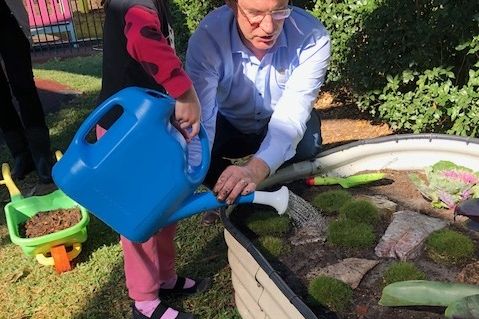
A guest blog penned by Arbor Operations.
It’s no secret being out in the great outdoors is good for your health, but it also has significant benefits for children with developmental conditions like autism.
Arbor Operations’ Peter Mumford said mother nature has extraordinary healing powers and studies have shown letting children explore nature can really help with their sensory development.
“Colourful and interactive gardens get children outside allowing them to touch, feel, taste, smell and hear different plants and sensory experiences,” Mr Mumford said.
“Using plants and the environment is a great tool to assist in the learning process,” he said.
“Leaves alone have many different textures to explore, some are prickly others furry or waxy.”
“When you identify trees and plants you often need to touch them, for example Hoop Pine needles are quite prickly while a Norfolk Pine needle is quite smooth, although they look the same.”
“For children with autism, sensory gardens can be a calm space where they can freely explore their senses without becoming overwhelmed.”
“Autism is something that affects one in 100 Australians so there are many families dealing with the condition every day.”
“My five-year-old nephew James has autism and I have seen a marked improvement in him since he’s been attending an AEIOU centre.”
AEIOU Foundation provides autism-specific early intervention with nine centres across Queensland and South Australia. They specialise in delivering quality therapy along with practical and caring support for children aged 2 -6 years.
“He’s made three years’ worth of developmental gains in six months with his speech in particular.”
“After seeing such amazing results with my nephew, I just wanted to give something back to this great organization and revamping the sensory garden seemed like a great place to start.”
Tips for creating a therapeutic garden to stimulate children’s senses;
- Touch: Incorporate different types of leaves so children can experience a variety of textures for example succulents or Aloe Vera or a small perennial like Lamb’s Ear. It’s also important to choose resilient plants that can be touched regularly by little hands.
- Taste: Herb gardens are perfect in a sensory garden but depending on how much space you have you could include beetroot, lettuce, shallots, fruit trees, strawberry or raspberry plants or even edible flowers.
- Smell: Consider how the plant aromas will work with each other and choose smells that will complement rather than clash, so a strong-smelling plant next to a more subtle aroma. Plants such lavender, thyme, nasturnum, honeysuckle and mint work well.
- Sight: Bring some beautiful colours into the garden with flowers such as snapdragons, cordylines, bromeliads or daisy’s. Incorporate a colourful mural if possible and consider signs like ‘Taste Me’ or ‘Smell Me’ to encourage children to interact with the plants.
- Sound: Gardens can be lovely and calming and the sounds you hear as you explore can play a large part in this. It could be the sound of wind going through long grass or bamboo, a soothing water feature or wind chime, the crunch as children walk a long a gravel path or adding some feeders to increase the number of birds visiting the garden.
“We often lose touch with the outdoors and getting children involved in a garden takes them away from that sedentary electronic indoor environment that’s becoming all too common.”
AEIOU’s Foundation CEO Alan Smith said he’s grateful for the support of community-minded organisations like Arbor Operations.
“This initiative is important to the staff, children and families at our Nathan centre. I’d like to extend my sincere thanks to the team at Arbor Operations for this generous donation,” Mr Smith said.


































